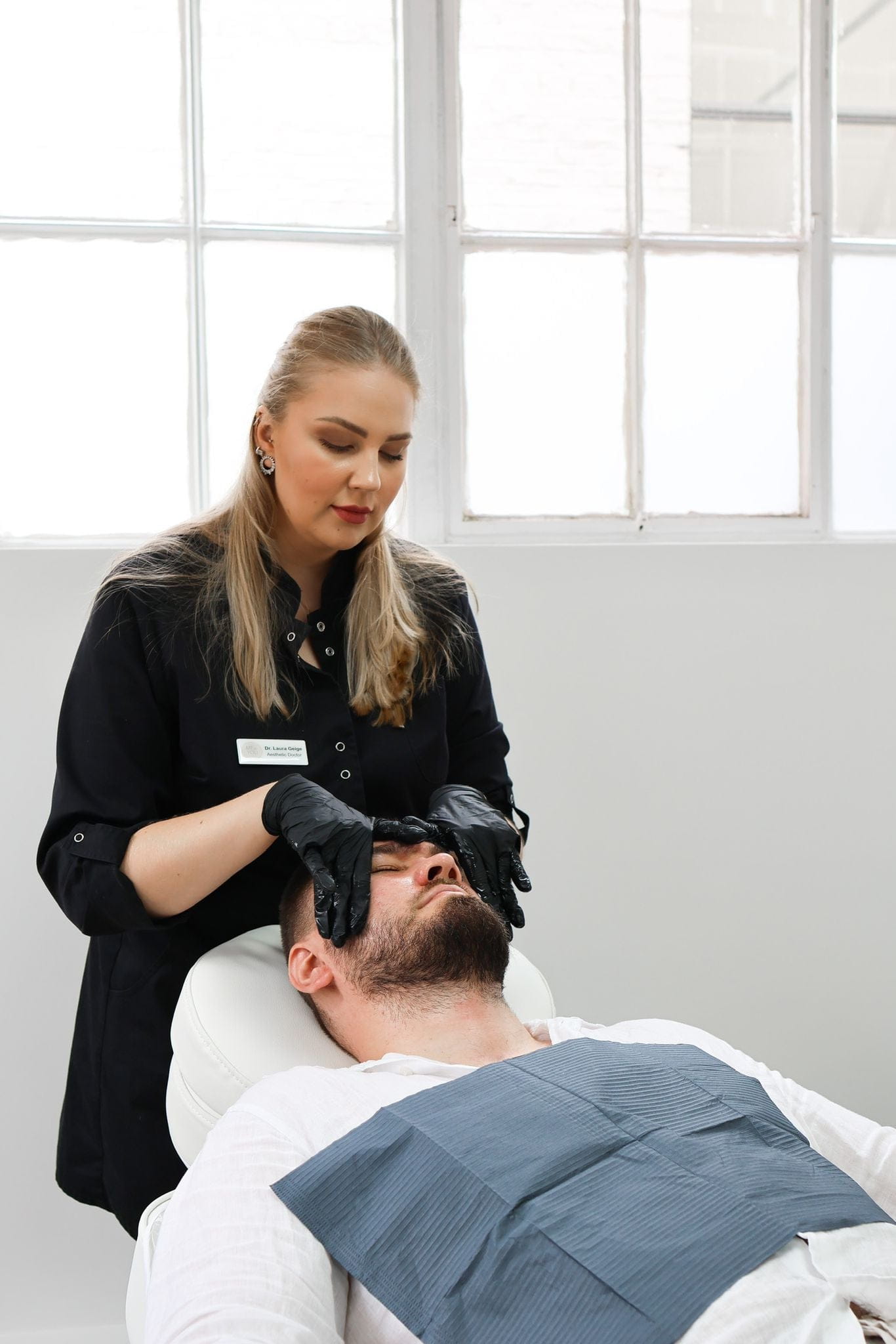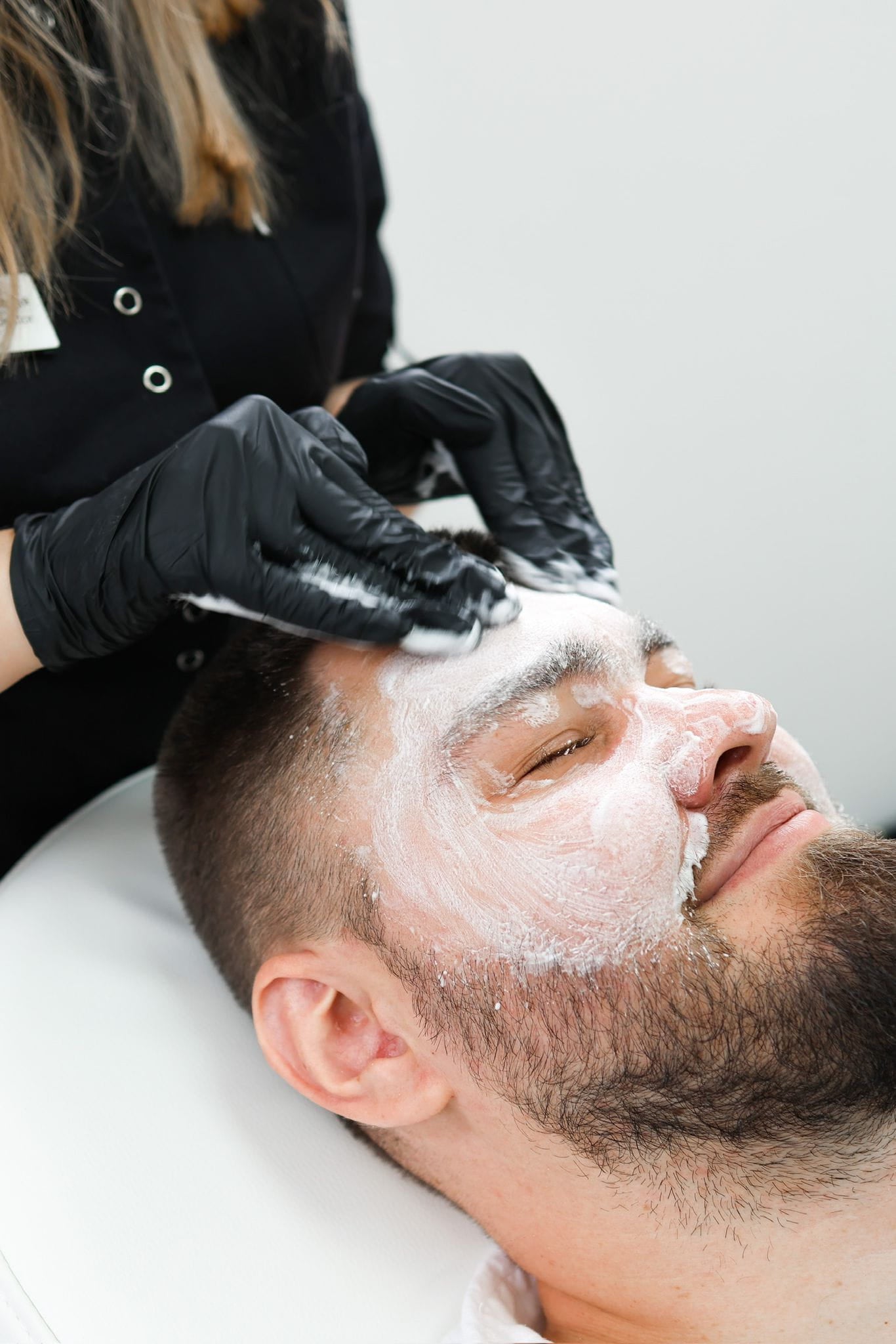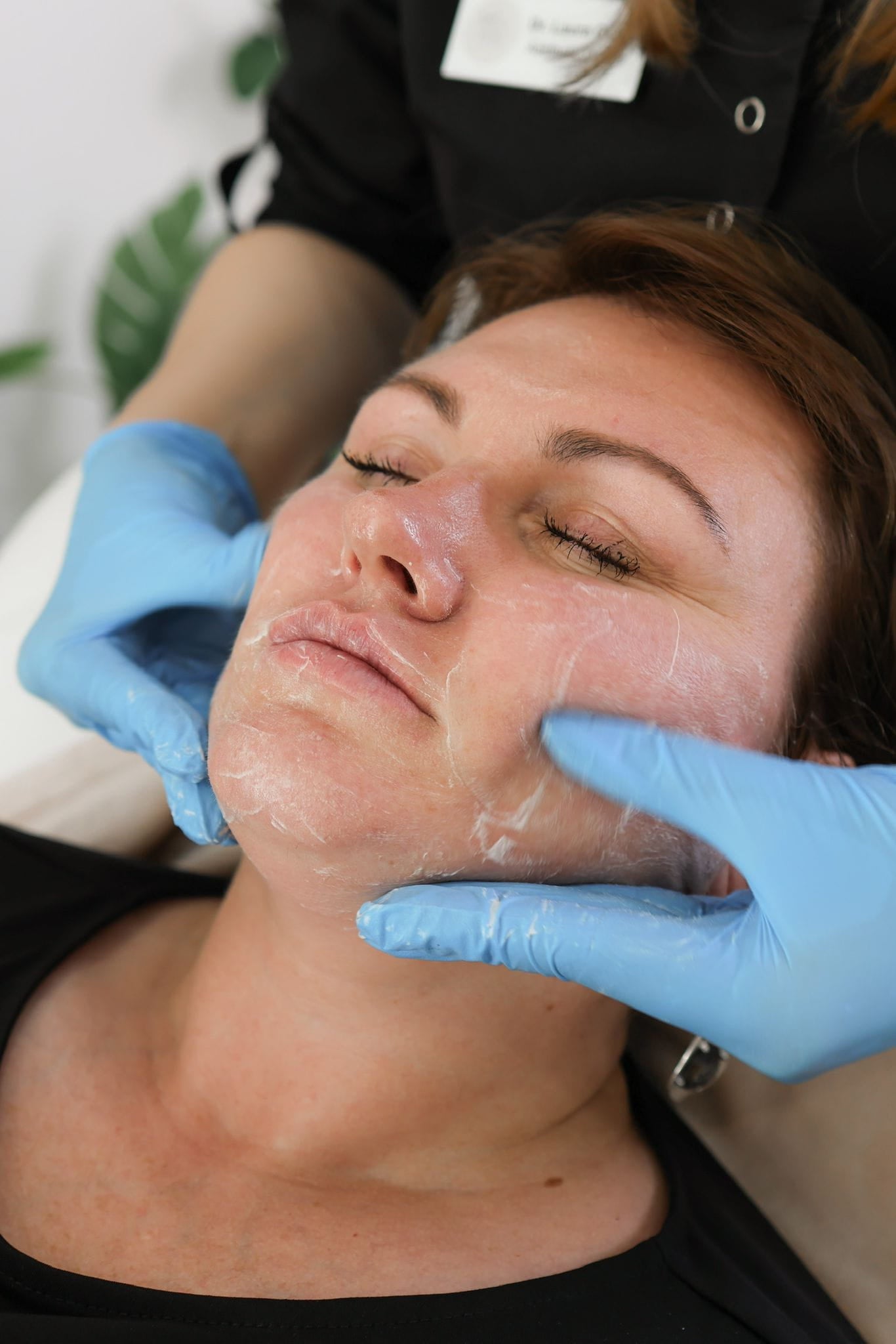Protecting Your Skin During Recovery
Protecting your skin during recovery is crucial for achieving optimal results after any cosmetic procedure, and the Cosmelan Depigmentation Peel is no exception. Taking steps to shield your freshly treated skin from sun exposure, irritants, and other potential stressors can significantly reduce the risk of hyperpigmentation, ensuring a more even and radiant complexion in the long run.
Sun Protection
Protecting your skin during recovery is crucial for achieving optimal results after any cosmetic procedure, and the Cosmelan Depigmentation Peel is no exception. Taking steps to shield your freshly treated skin from sun exposure, irritants, and other potential stressors can significantly reduce the risk of hyperpigmentation, ensuring a more even and radiant complexion in the long run.
- Avoid direct sun exposure for at least four weeks after your treatment. The peel can make your skin more sensitive to the sun’s harmful UV rays, increasing your risk of sunburn and hyperpigmentation.
- Always wear a broad-spectrum sunscreen with an SPF of 30 or higher, even on cloudy days. Reapply every two hours, especially after sweating or swimming.
- Protect your skin from other potential irritants like harsh soaps, fragrances, and exfoliating scrubs. Opt for gentle cleansers and moisturizers specifically formulated for sensitive skin.
- Wear protective clothing, such as hats and long-sleeved shirts, when spending time outdoors.
- Be mindful of activities that may cause friction or irritation to your treated skin, like vigorous exercise or sleeping on rough fabrics.
Hydration
Protecting your skin during recovery is crucial for achieving optimal results after any cosmetic procedure, and the Cosmelan Depigmentation Peel is no exception. Taking steps to shield your freshly treated skin from sun exposure, irritants, and other potential stressors can significantly reduce the risk of hyperpigmentation, ensuring a more even and radiant complexion in the long run.

During the recovery period following your Cosmelan treatment, hydration is paramount. Your skin will be going through a healing process, and adequate moisture will aid in cell regeneration and minimize dryness or flakiness.
- Drink plenty of water throughout the day to keep your body hydrated from the inside out.
- Use a gentle, fragrance-free moisturizer specifically designed for sensitive skin. Apply it liberally several times a day, as needed.
- Consider incorporating hydrating serums or masks into your skincare routine. Look for ingredients like hyaluronic acid, aloe vera, or glycerin.
Gentle Skincare Routine
Protecting your skin during recovery is crucial for achieving optimal results after any cosmetic procedure, and the Cosmelan Depigmentation Peel is no exception. Taking steps to shield your freshly treated skin from sun exposure, irritants, and other potential stressors can significantly reduce the risk of hyperpigmentation, ensuring a more even and radiant complexion in the long run.
- Avoid direct sun exposure for at least four weeks after your treatment. The peel can make your skin more sensitive to the sun’s harmful UV rays, increasing your risk of sunburn and hyperpigmentation.
- Always wear a broad-spectrum sunscreen with an SPF of 30 or higher, even on cloudy days. Reapply every two hours, especially after sweating or swimming.
- Protect your skin from other potential irritants like harsh soaps, fragrances, and exfoliating scrubs. Opt for gentle cleansers and moisturizers specifically formulated for sensitive skin.
- Wear protective clothing, such as hats and long-sleeved shirts, when spending time outdoors.
- Be mindful of activities that may cause friction or irritation to your treated skin, like vigorous exercise or sleeping on rough fabrics.
During the recovery period following your Cosmelan treatment, hydration is paramount. Your skin will be going through a healing process, and adequate moisture will aid in cell regeneration and minimize dryness or flakiness.
- Drink plenty of water throughout the day to keep your body hydrated from the inside out.
- Use a gentle, fragrance-free moisturizer specifically designed for sensitive skin. Apply it liberally several times a day, as needed.
- Consider incorporating hydrating serums or masks into your skincare routine. Look for ingredients like hyaluronic acid, aloe vera, or glycerin.
Lifestyle Factors for Preventing Hyperpigmentation
Protecting your skin post-treatment is crucial for maximizing the results of your Cosmelan Depigmentation Peel. By minimizing sun exposure, avoiding irritants, and prioritizing hydration, you can significantly reduce the risk of hyperpigmentation and ensure a smoother, more even complexion.
Diet
Maintaining a healthy lifestyle can contribute to preventing hyperpigmentation after your Cosmelan Depigmentation Peel. A balanced diet rich in antioxidants can help protect your skin from damage caused by free radicals.
- Include plenty of fruits and vegetables in your diet, especially those high in vitamin C, such as citrus fruits, berries, and leafy greens.
- Consume foods rich in antioxidants like dark chocolate, green tea, and nuts.
- Stay hydrated by drinking plenty of water throughout the day.
While diet alone cannot completely prevent hyperpigmentation, it can play a supportive role in promoting healthy skin and reducing the risk of discoloration.
Stress Management
Protecting your skin post-treatment is crucial for maximizing the results of your Cosmelan Depigmentation Peel. By minimizing sun exposure, avoiding irritants, and prioritizing hydration, you can significantly reduce the risk of hyperpigmentation and ensure a smoother, more even complexion.
Maintaining a healthy lifestyle can contribute to preventing hyperpigmentation after your Cosmelan Depigmentation Peel. A balanced diet rich in antioxidants can help protect your skin from damage caused by free radicals.
- Include plenty of fruits and vegetables in your diet, especially those high in vitamin C, such as citrus fruits, berries, and leafy greens.
- Consume foods rich in antioxidants like dark chocolate, green tea, and nuts.
- Stay hydrated by drinking plenty of water throughout the day.
While diet alone cannot completely prevent hyperpigmentation, it can play a supportive role in promoting healthy skin and reducing the risk of discoloration. Stress can also exacerbate hyperpigmentation.
- Find healthy ways to manage stress, such as practicing yoga, meditation, or spending time in nature.
- Ensure you get enough sleep, as lack of rest can increase cortisol levels, which may contribute to pigmentation problems.
Sleep
Maintaining a healthy lifestyle can contribute to preventing hyperpigmentation after your Cosmelan Depigmentation Peel. A balanced diet rich in antioxidants can help protect your skin from damage caused by free radicals.
- Include plenty of fruits and vegetables in your diet, especially those high in vitamin C, such as citrus fruits, berries, and leafy greens.
- Consume foods rich in antioxidants like dark chocolate, green tea, and nuts.
- Stay hydrated by drinking plenty of water throughout the day.
While diet alone cannot completely prevent hyperpigmentation, it can play a supportive role in promoting healthy skin and reducing the risk of discoloration.
Stress can also exacerbate hyperpigmentation.
- Find healthy ways to manage stress, such as practicing yoga, meditation, or spending time in nature.
- Ensure you get enough sleep, as lack of rest can increase cortisol levels, which may contribute to pigmentation problems.
Professional Care After Cosmelan Peel

Protecting your skin during recovery is crucial for achieving optimal results after any cosmetic procedure, and the Cosmelan Depigmentation Peel is no exception. Taking steps to shield your freshly treated skin from sun exposure, irritants, and other potential stressors can significantly reduce the risk of hyperpigmentation, ensuring a more even and radiant complexion in the long run.
Follow-up Appointments with your Dermatologist
Protecting your skin during recovery is crucial for achieving optimal results after any cosmetic procedure, and the Cosmelan Depigmentation Peel is no exception. Taking steps to shield your freshly treated skin from sun exposure, irritants, and other potential stressors can significantly reduce the risk of hyperpigmentation, ensuring a more even and radiant complexion in the long run.
During the recovery period following your Cosmelan treatment, hydration is paramount. Your skin will be going through a healing process, and adequate moisture will aid in cell regeneration and minimize dryness or flakiness.
- Drink plenty of water throughout the day to keep your body hydrated from the inside out.
- Use a gentle, fragrance-free moisturizer specifically designed for sensitive skin. Apply it liberally several times a day, as needed.
- Consider incorporating hydrating serums or masks into your skincare routine. Look for ingredients like hyaluronic acid, aloe vera, or glycerin.
Follow-up appointments with your dermatologist are essential for monitoring your progress and ensuring the best possible outcome.
Your dermatologist will assess the condition of your skin, address any concerns you may have, and provide guidance on how to continue caring for your skin throughout the recovery process. They may also recommend additional treatments or products tailored to your specific needs.
It’s important to follow your dermatologist’s instructions carefully and attend all scheduled appointments.
Additional Treatments
Protecting your skin during recovery is crucial for achieving optimal results after any cosmetic procedure, and the Cosmelan Depigmentation Peel is no exception. Taking steps to shield your freshly treated skin from sun exposure, irritants, and other potential stressors can significantly reduce the risk of hyperpigmentation, ensuring a more even and radiant complexion in the long run.
- Avoid direct sun exposure for at least four weeks after your treatment. The peel can make your skin more sensitive to the sun’s harmful UV rays, increasing your risk of sunburn and hyperpigmentation.
- Always wear a broad-spectrum sunscreen with an SPF of 30 or higher, even on cloudy days. Reapply every two hours, especially after sweating or swimming.
- Protect your skin from other potential irritants like harsh soaps, fragrances, and exfoliating scrubs. Opt for gentle cleansers and moisturizers specifically formulated for sensitive skin.
- Wear protective clothing, such as hats and long-sleeved shirts, when spending time outdoors.
- Be mindful of activities that may cause friction or irritation to your treated skin, like vigorous exercise or sleeping on rough fabrics.
During the recovery period following your Cosmelan treatment, hydration is paramount. Your skin will be going through a healing process, and adequate moisture will aid in cell regeneration and minimize dryness or flakiness.
- Drink plenty of water throughout the day to keep your body hydrated from the inside out.
- Use a gentle, fragrance-free moisturizer specifically designed for sensitive skin. Apply it liberally several times a day, as needed.
- Consider incorporating hydrating serums or masks into your skincare routine. Look for ingredients like hyaluronic acid, aloe vera, or glycerin.

Maintaining a healthy lifestyle can contribute to preventing hyperpigmentation after your Cosmelan Depigmentation Peel. A balanced diet rich in antioxidants can help protect your skin from damage caused by free radicals.
- Include plenty of fruits and vegetables in your diet, especially those high in vitamin C, such as citrus fruits, berries, and leafy greens.
- Consume foods rich in antioxidants like dark chocolate, green tea, and nuts.
- Stay hydrated by drinking plenty of water throughout the day.
While diet alone cannot completely prevent hyperpigmentation, it can play a supportive role in promoting healthy skin and reducing the risk of discoloration. Stress can also exacerbate hyperpigmentation.
- Find healthy ways to manage stress, such as practicing yoga, meditation, or spending time in nature.
- Ensure you get enough sleep, as lack of rest can increase cortisol levels, which may contribute to pigmentation problems.
Follow-up appointments with your dermatologist are essential for monitoring your progress and ensuring the best possible outcome.
Your dermatologist will assess the condition of your skin, address any concerns you may have, and provide guidance on how to continue caring for your skin throughout the recovery process. They may also recommend additional treatments or products tailored to your specific needs.
It’s important to follow your dermatologist’s instructions carefully and attend all scheduled appointments.
Signs of Hyperpigmentation and When to Seek Help
Hyperpigmentation is a common concern, characterized by darkened patches on the skin often caused by sun exposure, inflammation, or injury. It can manifest as freckles, age spots, melasma, or post-inflammatory hyperpigmentation. If you notice any persistent changes in your skin color or have concerns about hyperpigmentation, consulting a dermatologist is advisable.
Recognizing Different Types of Hyperpigmentation
Hyperpigmentation occurs when an overproduction of melanin, the pigment that gives skin its color, leads to darkened patches on the skin. These patches can appear as freckles, age spots (liver spots), melasma (often appearing on the face in patches or “masks”), or post-inflammatory hyperpigmentation (darkening after acne, injuries, or other skin irritation). Recognizing different types of hyperpigmentation can help you understand their causes and potential treatments.
Freckles are small, flat, light brown spots that tend to appear on sun-exposed areas like the face, shoulders, and arms. They are usually harmless and develop due to increased melanin production triggered by sun exposure.
Age spots, also known as liver spots, are larger, darker brown patches that typically appear on the hands, face, and forearms with age. Sun exposure is the primary cause of age spots, and they are more common in fair-skinned individuals.
Melasma is a condition characterized by symmetrical, brownish-gray patches often appearing on the forehead, cheeks, nose, and upper lip. Hormonal changes, sun exposure, and genetics can contribute to melasma.
Post-inflammatory hyperpigmentation (PIH) develops after inflammation or injury to the skin. Acne breakouts, cuts, burns, and even certain medications can trigger PIH, resulting in darkened patches at the site of inflammation.
When to Seek Help:
While some types of hyperpigmentation are harmless and may fade over time, it’s important to consult a dermatologist if you have concerns about your skin. Seek professional advice if:
- Hyperpigmentation is spreading or changing in appearance.
- You experience any itching, pain, or discomfort associated with the hyperpigmented areas.
- You are concerned about the severity or impact of hyperpigmentation on your self-esteem.
A dermatologist can diagnose the type of hyperpigmentation you have and recommend appropriate treatment options.
Contacting Your Dermatologist
Hyperpigmentation is a common skin concern that occurs when an overproduction of melanin, the pigment responsible for skin color, leads to darkened patches. Recognizing different types of hyperpigmentation can help you understand their causes and potential treatments.
Freckles are small, flat, light brown spots that tend to appear on sun-exposed areas like the face, shoulders, and arms. They are usually harmless and develop due to increased melanin production triggered by sun exposure.
Age spots, also known as liver spots, are larger, darker brown patches that typically appear on the hands, face, and forearms with age. Sun exposure is the primary cause of age spots, and they are more common in fair-skinned individuals.
Melasma is a condition characterized by symmetrical, brownish-gray patches often appearing on the forehead, cheeks, nose, and upper lip. Hormonal changes, sun exposure, and genetics can contribute to melasma.
Post-inflammatory hyperpigmentation (PIH) develops after inflammation or injury to the skin. Acne breakouts, cuts, burns, and even certain medications can trigger PIH, resulting in darkened patches at the site of inflammation.
When to Seek Help:
While some types of hyperpigmentation are harmless and may fade over time, it’s important to consult a dermatologist if you have concerns about your skin. Seek professional advice if:
* Hyperpigmentation is spreading or changing in appearance.
* You experience any itching, pain, or discomfort associated with the hyperpigmented areas.
* You are concerned about the severity or impact of hyperpigmentation on your self-esteem.
A dermatologist can diagnose the type of hyperpigmentation you have and recommend appropriate treatment options. Contacting your dermatologist is always a good idea if you are unsure about how to address skin concerns.
Book your Cosmelan Depigmentation Peel with Dr. Laura Geige at It’s Me & You Clinic.
- How To Choose The Best Brow Lift Treatment Clinic In London - September 4, 2025
- How To Avoid Hyperpigmentation After Cosmelan Depigmentation Peel In The UK - September 2, 2025
- How Tear Trough Fillers Work To Restore Volume And Smooth Out Wrinkles Under The Eyes In Surrey - September 1, 2025

